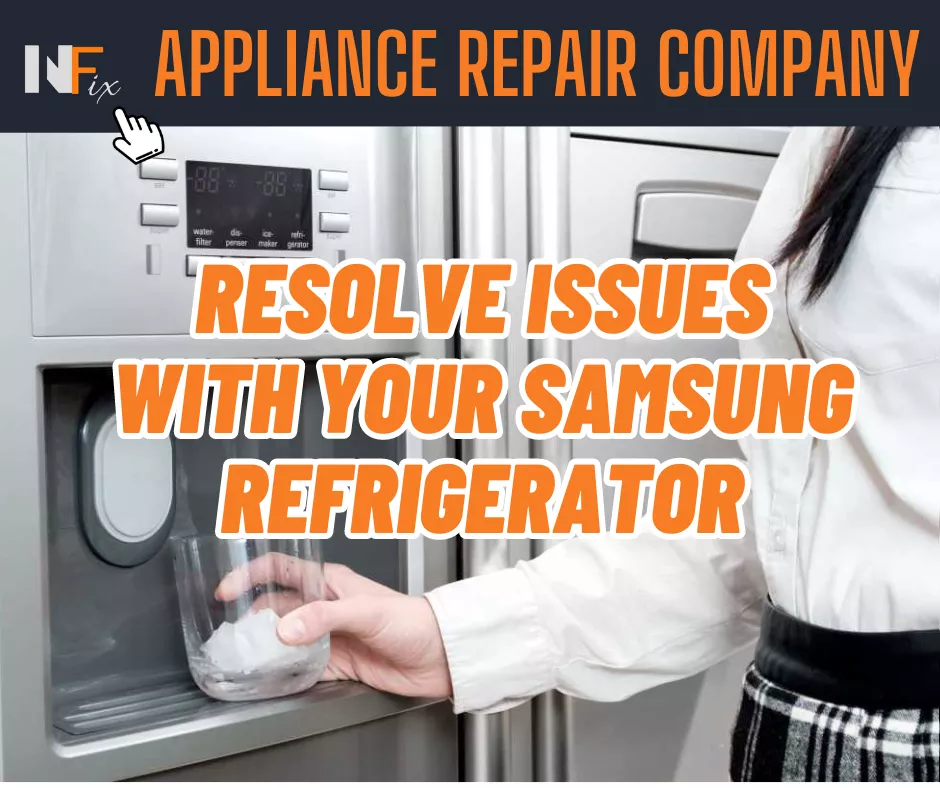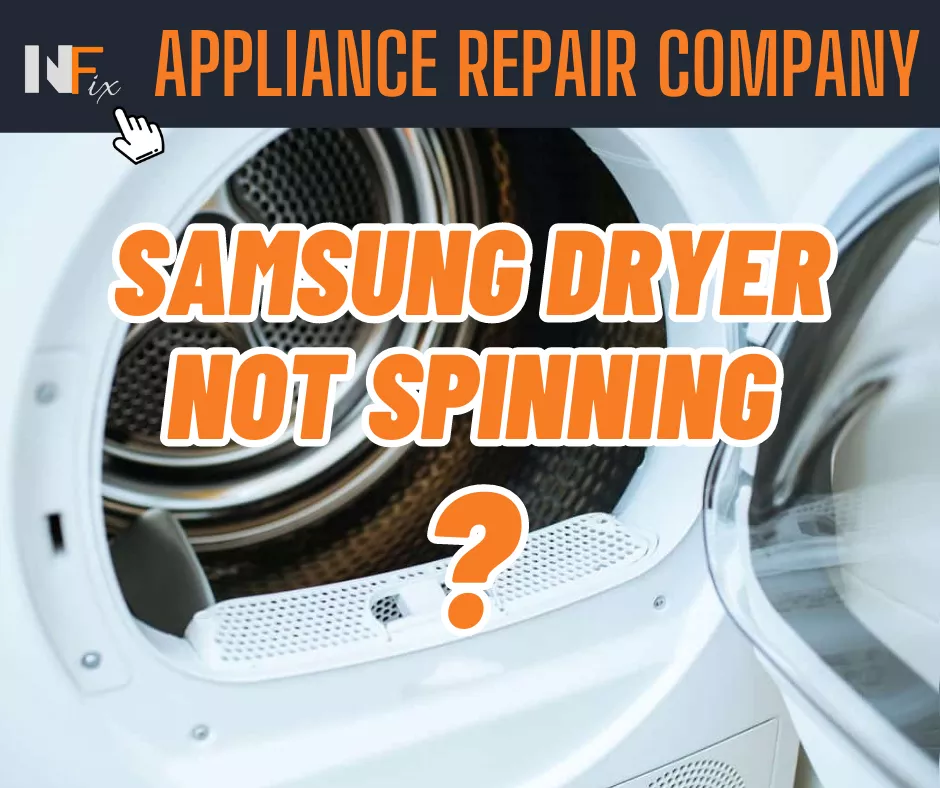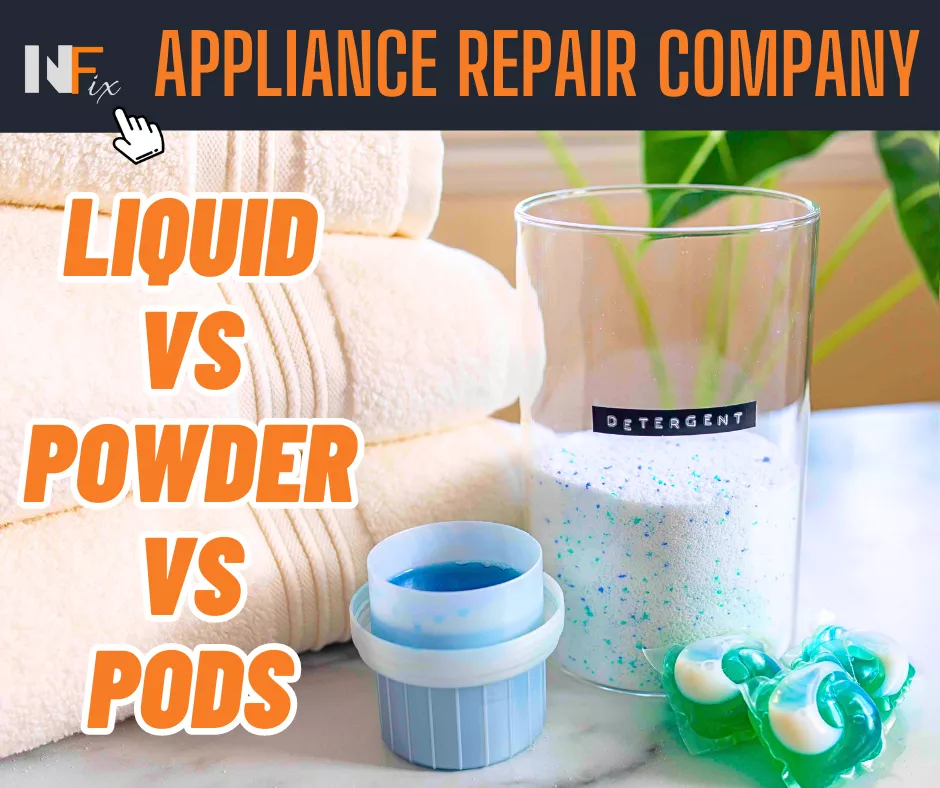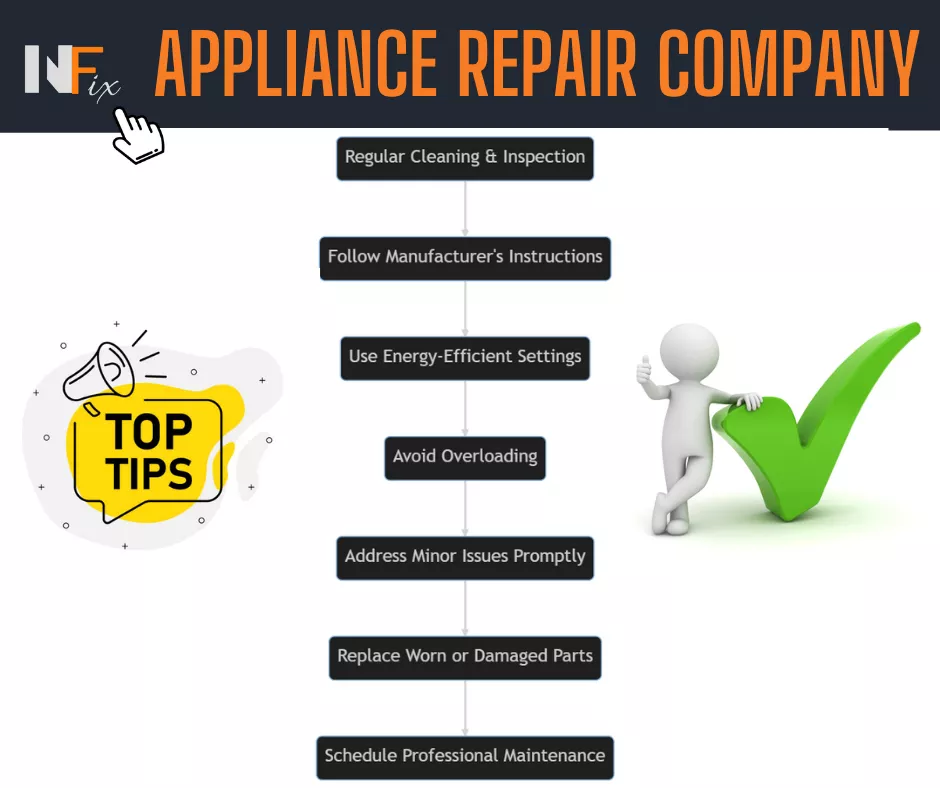Comprehensive Guide to Troubleshooting KitchenAid Dishwasher Cleaning Problems
Providing a meticulous service in maintaining and repairing appliances, we are here to offer you a detailed guide on troubleshooting common cleaning problems with KitchenAid dishwashers. You might also find our blog on DIY Appliance Repair in Nashville helpful.
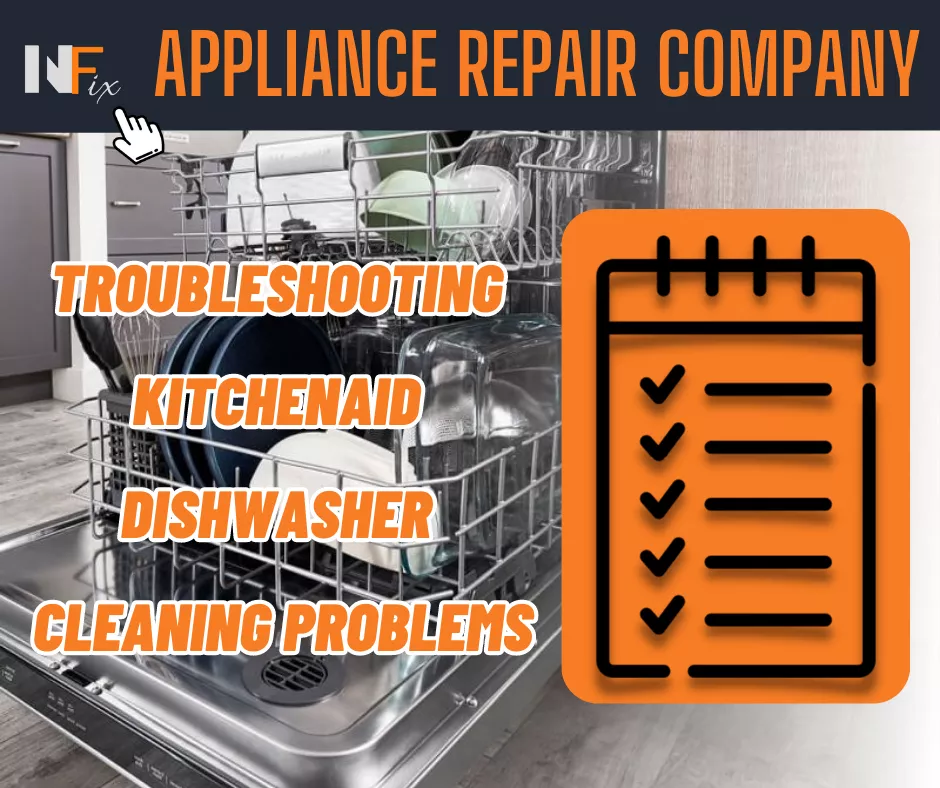
Dishwasher Not Cleaning Effectively
One of the most common issues with KitchenAid dishwashers is their not cleaning effectively. Before you decide to call a professional, here are a few steps you can take to resolve this issue.
Check the Spray Arms
Inspect the spray arms for any food particles or debris that may be causing a blockage. To do this, remove the bottom dish rack to access the bottom spray arm. Rotate it, and if it doesn’t move freely, you’ll need to clean it. Do the same for the top spray arm.
Assess the Filter
A clogged filter can prevent your dishwasher from cleaning your dishes effectively. Locate your dishwasher’s filter, usually found at the bottom of the dishwasher. Remove and clean it according to the manufacturer’s instructions.
Dishwasher Leaving Spots on Dishes
If your dishwasher is leaving spots on your dishes, it may be due to hard water. Here are some solutions you might consider. For a more detailed guide, you might want to read our article on the most common appliance repairs in Nashville.
Use a Rinse Aid
Rinse aids are designed to prevent water from forming droplets that can dry as spots or streaks. They also help to improve drying by allowing water to drain from the dishes after the final rinse.
Consider a Water Softener
Installing a water softener can be beneficial in areas with hard water. It helps reduce the mineral content in water, thereby improving the overall performance of your dishwasher.
Dishwasher Not Draining Properly
A dishwasher not draining can lead to ineffective cleaning. Here’s how to tackle this issue.
Check the Drain Hose
The drain hose could be causing your dishwasher not to drain properly. Make sure there are no kinks in the hose that could be causing a blockage.
Inspect the Drain Pump and Motor
The drain pump and motor could be faulty, causing the dishwasher not to drain. The pump uses an impeller to force water into the drain pipe. If the pump motor is not running, or if the impeller is damaged, the pump may need to be replaced.
If your dishwasher continues to perform poorly after all these troubleshooting steps, it may be time to call a professional. They can provide a more thorough examination and fix more complex issues that you may not be able to handle. You can get more information on this topic in our article about expert appliance repair in Nashville with NashFix.
Dishwasher Not Drying Dishes Properly
Another common issue with KitchenAid dishwashers is dishes not drying properly. If you’re facing this problem, these steps may help you to find a solution.
Check the Heating Element
The heating element is responsible for drying the dishes. If it’s not functioning correctly, it could be the reason why your dishes aren’t drying. Use a multimeter to test the heating element for
continuity. If it doesn’t have continuity, replace it.
Verify the Rinse Aid Dispenser
The rinse aid plays a vital role in drying dishes by reducing water’s surface tension, allowing it to spread and evaporate more easily. If your dishes aren’t drying properly, check the rinse aid dispenser. If it’s empty, refill it. If it’s malfunctioning, it may need to be replaced.
Dishwasher Making Unusual Noises
Sometimes, your KitchenAid dishwasher might start making unusual noises, which can indicate a problem with the machine’s internal components.
Inspect the Pump
Noises during a wash or drain cycle might suggest an issue with the pump. Debris or foreign objects in the pump can cause noise. Inspect the pump and remove any debris you find.
Check the Wash Arms
If the wash arms are hitting the dishes during the cycle, they could produce noise. Ensure that the dish racks are fully loaded and the wash arms can move freely.
Dishwasher Not Starting
In some cases, your dishwasher might not start at all. Here’s what you can do to resolve this. For more information on when it’s worth it to repair your appliance, you can read our blog on is it worth it to fix an appliance.
Examine the Door Latch
The dishwasher will not start if the door is not properly latched. If the door latch is broken or faulty, it might need to be replaced.
Check the Thermal Fuse
The thermal fuse is a safety device that prevents the dishwasher from overheating. If the thermal fuse has blown, the dishwasher will not start. You can use a multimeter to test the thermal fuse for continuity. If it doesn’t have continuity, replace it.
Regular Maintenance for Optimal Performance
While resolving current issues is vital, the importance of regular maintenance for your KitchenAid dishwasher cannot be overstated. Regular care and cleaning can prevent many common problems and extend the lifespan of your appliance. For some useful tips, you can read our blog post on 6 ways to keep appliances running properly.
Clean the Dishwasher Regularly
Over time, grease and food particles can accumulate in the dishwasher, reducing its efficiency. Cleaning it regularly can help to prevent this. Use a manufacturer-recommended cleaning agent and run the dishwasher empty on a hot cycle.
Check Seals and Gaskets
Inspect the door seal or gasket regularly. A leaky door seal could lead to water leaks and inefficient cleaning. If the seal is cracked or broken, it should be replaced.
Regularly Inspect and Clean the Filter
A clean filter is crucial for an optimally functioning dishwasher. Regularly inspect and clean the filter to ensure your dishwasher cleans effectively.
While resolving current issues is vital, the importance of regular maintenance for your KitchenAid dishwasher cannot be overstated. Regular care and cleaning can prevent many common problems and extend the lifespan of your appliance. For a comprehensive guide on maintaining your home appliances, you can read our blog post: 7 essential tips to maintain your home appliances.
In addition to the steps outlined in this guide, you might also consider seeking professional help for more complex issues or routine maintenance. Find out more about what an appliance repair shop can do for you in our blog post: what is an appliance repair shop.
If you’re looking for local services, our guide to appliance repair near me: your ultimate guide can help you find the best options in your area.
Lastly, for specific guides on cleaning other appliances in your home, check out our post on the ultimate guide to cleaning your ice maker: keep your ice fresh and safe.
Remember, taking care of your KitchenAid dishwasher and all your home appliances will ensure their efficiency and longevity, saving you time and money in the long run.
When to Seek Professional Help
While these troubleshooting steps can solve many common dishwasher problems, some issues require professional expertise. If your dishwasher still isn’t working correctly after you’ve tried these solutions, it’s time to call in a professional.
You can find more information about when to seek professional help in our blog post: expert appliance repair in Nashville with NashFix.
Remember, a well-maintained dishwasher is key to efficient operation and longevity. With the right care, your KitchenAid dishwasher can provide you with many years of excellent service.
Conclusion
KitchenAid dishwashers are known for their durability and superior performance. However, like all appliances, they can face occasional issues. This guide aims to provide you with detailed steps to troubleshoot some common problems you might encounter with your KitchenAid dishwasher.
Remember, while troubleshooting can fix some issues, regular preventive maintenance can keep your dishwasher running smoothly for years to come. And, when in doubt, don’t hesitate to reach out to a professional appliance repair service.
For more information on common appliance repairs in Nashville, you can visit our blog post: the most common appliance repairs in Nashville.
Frequently Asked Questions (FAQs)
The most common problem with a KitchenAid dishwasher is often related to cleaning performance, such as the dishwasher not cleaning dishes properly. This can be due to a variety of factors including clogged spray arms, a dirty filter, or issues with the detergent dispenser.
To run a diagnostic on your KitchenAid dishwasher, press the following buttons in quick succession: “Heated Dry,” “Normal,” “Heated Dry,” “Normal.” Wait for all the lights on the control panel to illuminate, then press “Cancel” to reset the dishwasher and exit diagnostic mode.
Resetting a KitchenAid dishwasher can often be done by pressing the “Start” button and holding it down for a few seconds or until the dishwasher begins to drain. Once the draining is complete, release the button and close the door.
You can reset your KitchenAid dishwasher by pressing the “High Temp Scrub” and “Energy Saver Dry” buttons alternatively, around four times each. All the lights on the control panel should light up, indicating that the dishwasher is reset.
The most common dishwasher fault is often related to drainage problems. This can be due to a clogged drain, a blocked filter, or a faulty drain pump.
There could be several reasons why your dishwasher isn’t working properly. Common issues include a faulty door latch, a blown thermal fuse, a clogged drain, or a defective pump or motor.
The first step in diagnosing a dishwasher that won’t start is to ensure it’s properly connected to power. If that’s not the issue, inspect the door latch, as the dishwasher won’t start if the door isn’t securely latched.
To put your dishwasher in diagnostic mode, press the following sequence of buttons: “Heated Dry,” “Normal,” “Heated Dry,” “Normal.” Wait for all the lights to illuminate, indicating that the dishwasher is in diagnostic mode.
If your KitchenAid dishwasher keeps stopping mid-cycle, it could be due to a problem with the door latch, a faulty control board, or issues with the motor or pump.
To manually reset your dishwasher, you can usually press and hold the “Start” or “Reset” button for about 10 seconds. If this doesn’t work, refer to your dishwasher’s user manual for specific instructions.
A blinking light on your KitchenAid dishwasher can indicate a variety of issues, from a simple door latch problem to a more complex control board malfunction. Try resetting the dishwasher first. If the problem persists, it might be best to call a professional.
If your KitchenAid dishwasher is not draining or starting, it could be due to a clogged drain or filter, a malfunctioning drain pump, a faulty door latch, or a blown thermal fuse. Check each of these components and replace or clean as necessary.
If there’s something wrong with your appliance or if it’s not working like it should be, if you need an appliance repair near you in Nashville TN and the surrounding areas – call us or text us at Appliance Repair Company NashFix today:
☎ (615)-502-2255 or you can
☑ book an appointment online.
ALSO SERVING:
Antioch, Arrington, Brentwood, College Grove, Columbia, Franklin, Gallatin, Goodlettsville, Hendersonville, Hermitage, La Vergne, Lebanon, Mount Juliet, Murfreesboro, Nashville, Nolensville, Smyrna, Spring Hill, Thompson’s Station.



